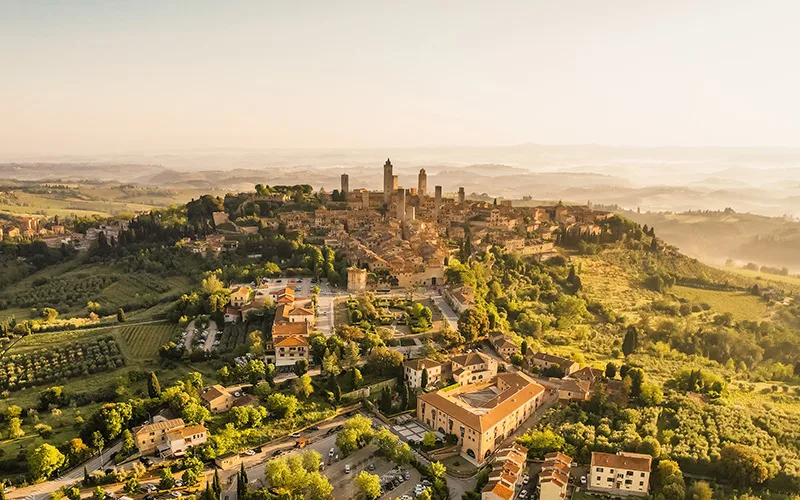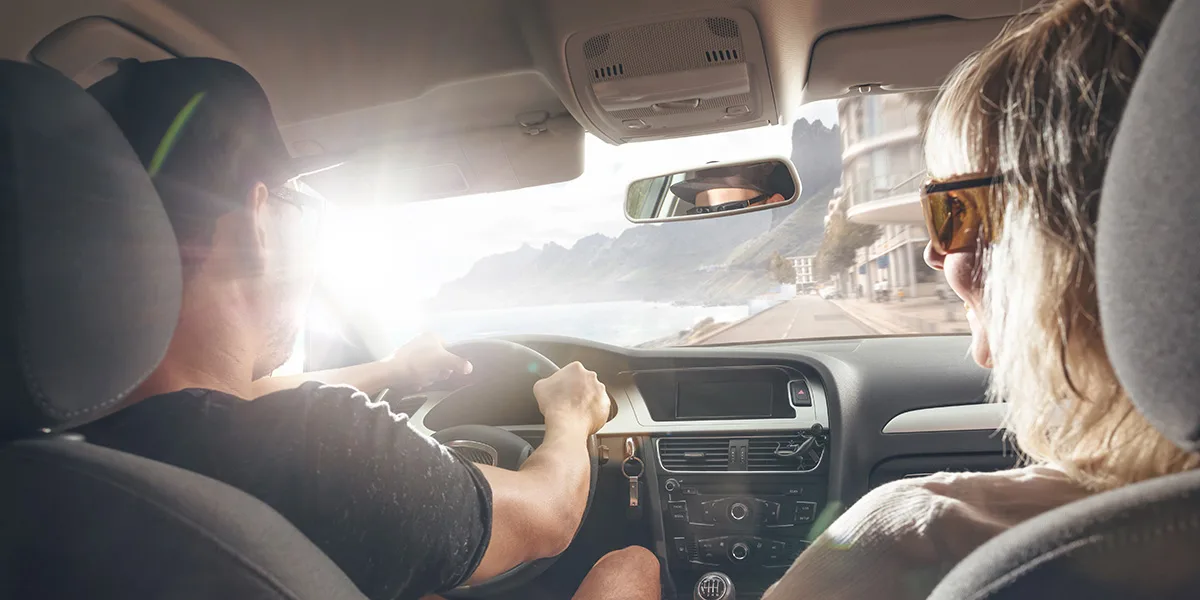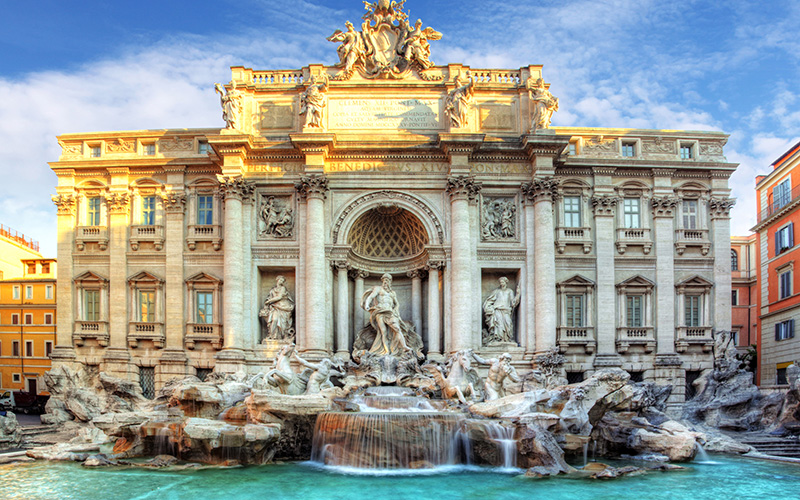

Complete guide to renting a car in Italy for 2025
Renting a Car in Italy invites wild turns through olive groves, narrow mountain climbs, and espresso-fueled escapes no guidebook predicts.
You’re planning the perfect escape, but one question keeps popping up—does renting a car in Italy make sense for you? This guide covers the essentials, including rental requirements, where to find affordable car rentals in Italy, driving in Italy, and more. Get all important information before you hit the road.
This article contains affiliate links.
Should you rent a car in Italy?
Renting a car in Italy can be a real advantage—or a hassle—depending on where you’re headed and how you like to travel. If your plans involve exploring quiet countryside, tucked-away villages, or scenic coastal roads, having your own set of wheels gives you the freedom to wander off the tourist track and move at your own pace.
That said, driving in Italy isn’t always a breeze. City centers are a maze of restricted zones (ZTLs), and slipping into one by mistake can land you a steep fine. Parking is another story—hard to find, expensive when you do. Add in toll roads, high gas prices, and unpredictable local driving habits, and you’ve got some serious cons to weigh.
A smart approach? Mix it up. Use trains for city travel, then rent a car when you’re ready to explore. It’s all about knowing when to drive—and when to just sit back and enjoy the ride.
Where to find a cheap car rental in Italy?
Visitteo
The same car often comes with different price tags depending on the website you check. Visitteo does the heavy lifting by comparing prices from all the top rental companies in one place. Instead of jumping between websites, you can find it all on Visitteo.
EconomyBookings
If saving money on car rentals is a priority, EconomyBookings is a smart pick. It finds some of the lowest prices around without cutting corners. With plenty of options from trusted providers worldwide, it’s easy to find and book a perfect car for your Italian trip.
Discover Cars
If renting a car feels like a headache, Discover Cars cuts through the chaos. It pulls deals from top providers, so you score the best price with zero hassle. Fast booking, support you can count on, and plenty of options—whether it’s a quick trip or a long haul.
Requirements for renting a car in Italy
When you rent a car in Italy, you’ll need to bring the following documents:
- Your driver’s license from your home country
- Your ID or passport
- Credit Card in your name
- International Driver’s Permit
Renting a car in Italy isn’t complicated, but there are a few must-knows before you grab the keys and hit the road. Firstly, most rental companies require drivers to be at least 21 years old, and if you’re under 25 or over 70, you can expect to pay a bit extra. You’ll also need to have held your license for at least a year.
If you’re coming from outside the EU, don’t forget an International Driving Permit. It’s legally required, and yes, police do ask for it. Skipping it could mean a fine. You’ll also need a credit card in the driver’s name to cover the deposit—debit cards don’t usually cut it.
What type of car should I rent in Italy?
If you’re planning to rent a car in Italy, go small. Seriously—Italy’s streets weren’t built with SUVs in mind. A compact car like a Fiat Panda or a VW Golf is your best bet for navigating those narrow alleyways and snagging tight parking spots without breaking a sweat.
Sticking to the cities? A little hatchback will do just fine. But if you’re heading into the countryside—think rolling hills in Tuscany or scenic routes through Umbria—a small SUV might give you a bit more comfort on those twisty, uneven roads.
And here’s a tip: unless you’re totally at ease driving a manual, spring for an automatic. They’re harder to find and pricier, but stalling out on a hill in Rome isn’t exactly a vibe. Get full insurance, too. Italian drivers are… let’s say confident, and even minor scrapes can turn into a headache fast.
Oh, and if the Amalfi Coast is on your list? Trust me—go for the tiniest car you can rent. Those cliffside roads are no joke.
Make sure you get insurance coverage
Basic insurance is usually included, but it comes with a high deductible (excess). Consider:
- CDW (Collision Damage Waiver)
- Theft protection
- Super CDW or full coverage to reduce liability to zero
If you’re renting a car in Italy, don’t gloss over the insurance—getting the right coverage matters more than you might think. By law, every rental comes with basic third-party liability insurance, which covers damage to others. But when it comes to the car you’re driving? That’s where things get tricky.
Most rental companies include a Collision Damage Waiver (CDW) and Theft Protection, but they often come with a steep deductible, sometimes well over €1,000. To lower or eliminate that excess, agencies will try to upsell you on “Super CDW,” which can easily add €10–30 per day to your rental bill.
Before you say yes at the counter, check whether your credit card covers CDW in Italy—many do, but not all. For real peace of mind, consider buying zero-excess or excess reimbursement insurance ahead of time. It’s usually cheaper than the rental desk upsell—and it can save you from nasty surprises later.
Best airports in Italy to start your road trip
If you’re dreaming of an Italian road trip, where you start can shape the whole experience. The good news? Italy has plenty of airports that make jumping behind the wheel easy, and each one offers its own charm and direction.
Rome’s always a solid starting point. Cheap car rental at Fiumicino Airport means a wide vehicle selection, good rates, and quick access to the city or the highways. Would you prefer something closer in and less hectic? Car rental at Ciampino Airport is ideal—smaller terminal, faster pickup, and often easier all around. From either, it’s a straight shot north into wine country or south to sun-drenched beaches.
Milan works just as well. Renting a car at Malpensa Airport gets you moving fast, especially if you’re headed for the lakes or the Alps. Want something more urban? Car hire at Linate Airport puts you right on the edge of the city—grab your car and you’re in central Milan before you know it.
If you’re starting up north, Venice is as practical as it is picturesque. Venice Airport car rental deals make it easy to transition from canals to the countryside. Looking for something off the radar? Bologna Airport car rental is a great call. It’s under the radar, stress-free, and perfectly placed for day trips through Emilia-Romagna or into northern Tuscany.
Heading south? Bari Airport car rentals put you right on track for exploring Puglia. You’ll be rolling through olive groves and coastal roads within minutes of landing—no chaos, no confusion.
And if Tuscany’s on the itinerary, you’re spoiled for choice. Florence Airport rental cars drop you straight into Renaissance charm, while car rental at Pisa Airport gives you fast access to both the coast and the countryside. Either way, you’re set up for something special.
Car breakdowns and accidents
Car breakdowns. If your rental car breaks down—maybe it’s a flat tire, a dead battery, or the engine starts acting up—don’t panic. Pull over to a safe spot, switch on your hazard lights, and call the emergency number listed in your rental agreement. Most rental companies in Italy offer 24/7 roadside assistance. You might be able to change a tire yourself if you’re comfortable with it (check the trunk for the spare), but if not, just wait for help. Keep your rental contract handy—it’ll come in useful if you need to file a claim or get reimbursed for expenses.
Car accidents. If you’re involved in an accident, even a minor one, safety comes first. Call emergency services if anyone’s hurt. Then, exchange details with the other driver, take photos of the scene, and fill out the CAI accident report form. You’ll also need to inform your rental agency within 24 hours. And don’t forget to review your insurance—there may be a deductible or liability you’ll need to cover. Skipping these steps can come back to bite you later.
Top tips for renting a car in Italy
Book early for cheaper prices. If you’re eyeing an automatic or a specific model, don’t wait. Rentals in Italy—especially during peak travel months—get scooped up fast. Booking early not only secures your ideal car but often lands you a better deal. Last-minute shoppers usually pay more and settle for less.
Get insurance. Basic coverage is legally required, but it won’t fully protect you. Most rentals come with collision and theft protection, but they also carry a steep deductible. Opting for zero-excess insurance gives you real peace of mind and can save you from nasty surprises if something goes wrong.
Compare prices. Don’t just book with the first site you land on. The same car can cost more or less depending on the rental agency or pick-up spot. Always compare prices, especially between airport and downtown locations, to find the best value for your budget.
Inspect the car. Before you turn the key, give the car a good once-over. Walk around, take photos or a quick video, and document every dent, scratch, or scuff. It takes five minutes and could save you from being charged for damage you didn’t cause.
Watch out for ZTL zones. Italian cities are full of ZTLs—restricted traffic zones with camera surveillance. Drive into one without authorization, and you could be slapped with a hefty fine. Look for signs, double-check your route, and always play it safe near old town areas.
Understand Italian car insurance. Don’t assume your credit card has you covered—many don’t in Italy. And while CDW is typically included, the excess can be sky-high. It’s smart to get additional coverage that either reduces or eliminates that liability.
Get a navigation system. Whether it’s Google Maps or an in-car GPS, having solid navigation is a lifesaver. It’ll warn you about ZTL zones, reroute around traffic, and help you avoid winding up on a tiny one-way street with no escape route.
Choose the right car. Bigger isn’t better in Italy. Streets in many towns are tight, parking can be a squeeze, and country roads often get narrow fast. Unless you’re hauling luggage for five, a compact car is the way to go.
FAQs
Absolutely—if you’re planning to explore Italy beyond the major cities, renting a car can make a world of difference. Think charming hill towns in Tuscany, the winding coastal roads of Amalfi, or the remote gems of Sicily. Public transport doesn’t always reach these places, and having a car gives you the freedom to go at your own pace, take scenic detours, and stop wherever catches your eye.
Yes, most rentals include basic coverage like Collision Damage Waiver (CDW) and Theft Protection. That said, these often come with a steep deductible. If you’d rather not take a gamble on unexpected costs, it’s smart to consider additional insurance for extra protection.
Usually, yes. Most rental companies allow you to take the car across borders, but you need to tell them upfront. Depending on where you’re going, there might be extra charges or some restrictions, so always double-check before you hit the road.
If your license isn’t from the EU, then yes—you’ll need an International Driving Permit (IDP) along with your regular license. It’s legally required and something rental companies often ask for, so don’t skip it.
You can. One-way rentals are totally doable, but they usually come with a surcharge. When you’re booking, just check for availability and see what the extra cost looks like—it’s often worth it for the convenience.
Speed limits vary by road type: highways are usually 130 km/h, rural roads around 90 km/h, and city streets drop to 50 km/h. Always pay attention to local signs—they can change depending on the area, especially near schools or town centers.
For the most part, yes. Roads are generally in good shape, and outside of big cities, driving tends to be straightforward. In places like Rome, Naples, or Milan, traffic can be a bit intense—drivers are assertive, parking is scarce, and navigating narrow streets takes patience. But if you’re heading into the countryside or smaller towns, a rental car is a great (and safe) way to get around.
Make sure you’ve got the essentials: a valid driver’s license, an IDP if needed, your passport or ID card, and a credit card in the driver’s name. Watch out for ZTL zones—these are restricted traffic areas in many city centers, and driving into one without authorization can lead to hefty fines. Also, get familiar with toll roads, local signage, and where you can (and can’t) park.
Technically, no. But practically? It’s a smart move. The included insurance often has a high deductible, meaning you’d still pay a lot if something goes wrong. Buying extra coverage, like Super CDW or full coverage with zero excess, gives you peace of mind and helps you avoid surprise expenses.
For city driving and short jaunts, absolutely—it’s easy, efficient, and chargers are everywhere. Longer drives? Still doable, just map out charging stops ahead of time, especially outside major routes.



